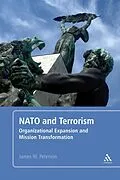NATO and Terrorism posits that the post 9/11 war on terrorism has had a profound effect on NATO's post Cold War structure and military missions.
Autorentext
James W. Peterson is Professor of Political Science and Head of the Department of Political Science at Valdosta State University, USA. Previous books include NATO and Terrorism: Organizational Expansion and Mission Transformation (2011) and Building a Framework of Security for Southeast Europe and the Black Sea Region: A Challenge Facing NATO (2013). His teaching centers on a course that considers how the Arab Spring challenges existing alliances and on a doctoral dissertation course for graduate students in public administration.
Inhalt
Introduction
1. The Battle Against Terrorism Reshapes the NATO Organization
2. Partners for Peace after the Cold War
3. From Partnership to Membership in 1999
4. The Class of 2004 and the Post-9/11 World
5. Further Class Memberships and the Traps of Southeast Europe
6. Bosnia in the Lengthened Shadow of the Cold War
7. Kosovo in the Shadow of Bosnia's Lessons
8. NATO applies its Capabilities in Afghanistan
9. The War in Iraq Shakes NATO Capabilities
10. European Security, East and West
11. The Coasts of NATO, North and South
12. NATO Missions Reshape the Battle against Terrorism
Reference List
